Focusing on health, Prioritizing whole foods and limiting processed foods as much as possible.
As a trainer, I always advocate for having well-balanced meals that have sufficient amounts of protein, carbs and fats and ones that prioritize whole foods over ultra-processed ones. My personal style of eating is primarily animal based, but I definitely do my best to include enough fruits and vegetables in my diet as well.
I prefer eating an animal based diet over a plant based one for a few reasons: First of all, I grew up eating lots of animal products like eggs, dairy, beef and chicken, so I grew up to like this way of eating. Second, animal sources of protein are superior to plant based proteins in terms of the amount of protein that can be absorbed from these foods. Some animal sources are also far more rich in minerals and certain nutrients compared to plant sources, for example, ground beef is a far better source for iron compared to spinach. Fruits and Vegetables are certainly still very important as they include fiber which is important for proper digestion and bowel movement, fruits and vegetables also include some vitamins and minerals that aren’t available in animal products.
It’s important to note though that I wasn’t always perfect with my eating habits. When first started my own fitness journey, I did what I thought I was supposed to do, bought some protein powder, started taking supplements and eating a bunch of protein bars. I didn’t care about the quality of the foods that I was having. I only focused on getting as much protein as humanly possible and hitting my macros. Soon, I realized that even though on paper, I was hitting all the numbers, in reality I was having lots of processed foods that weren’t made out of the best ingredients. I experienced digestive issues, gas and bloating often and just couldn’t really pinpoint why. It was only after shifting my focus to the quality of the food and not only the quantities, that I started feeling and performing better.
So here’s a sample of what I have on a typical day that allows me to nourish my body, mind and soul.
Breakfast (Meal 1)
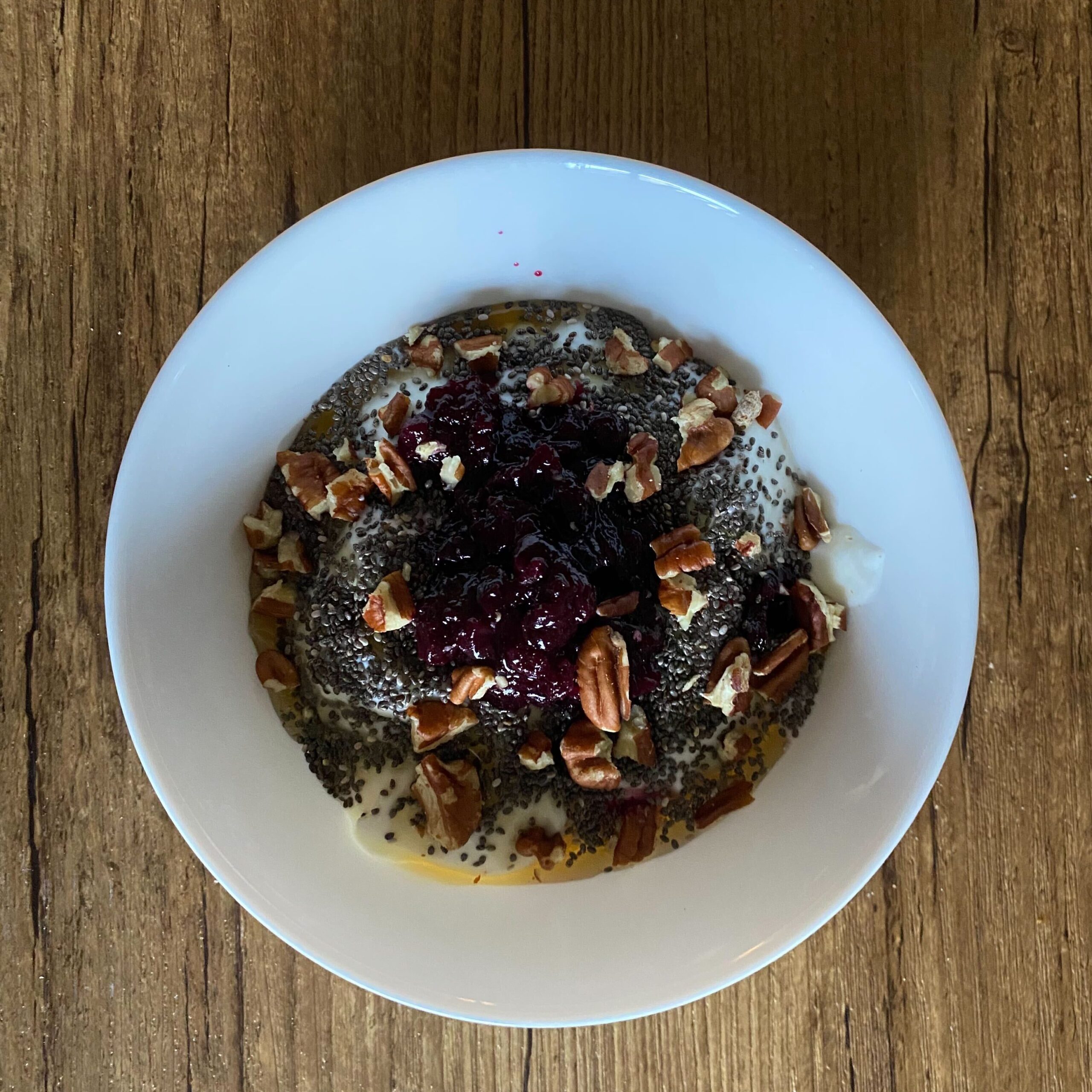
I like to start off my day with a good filling breakfast. Usually a Greek yogurt bowl. Mixed with it
some chia seeds for extra fiber to support bowel movement, some honey, homemade blueberry jam and topped with some chopped nuts.
Breakfast calories & macros: 289 calories, 39 Carbs, 11 Fats, 19 Protein
Ingredient List: Non-fat greek yogurt, blueberries, chia seeds, honey, pecans
Preworkout Snack (Meal 2)
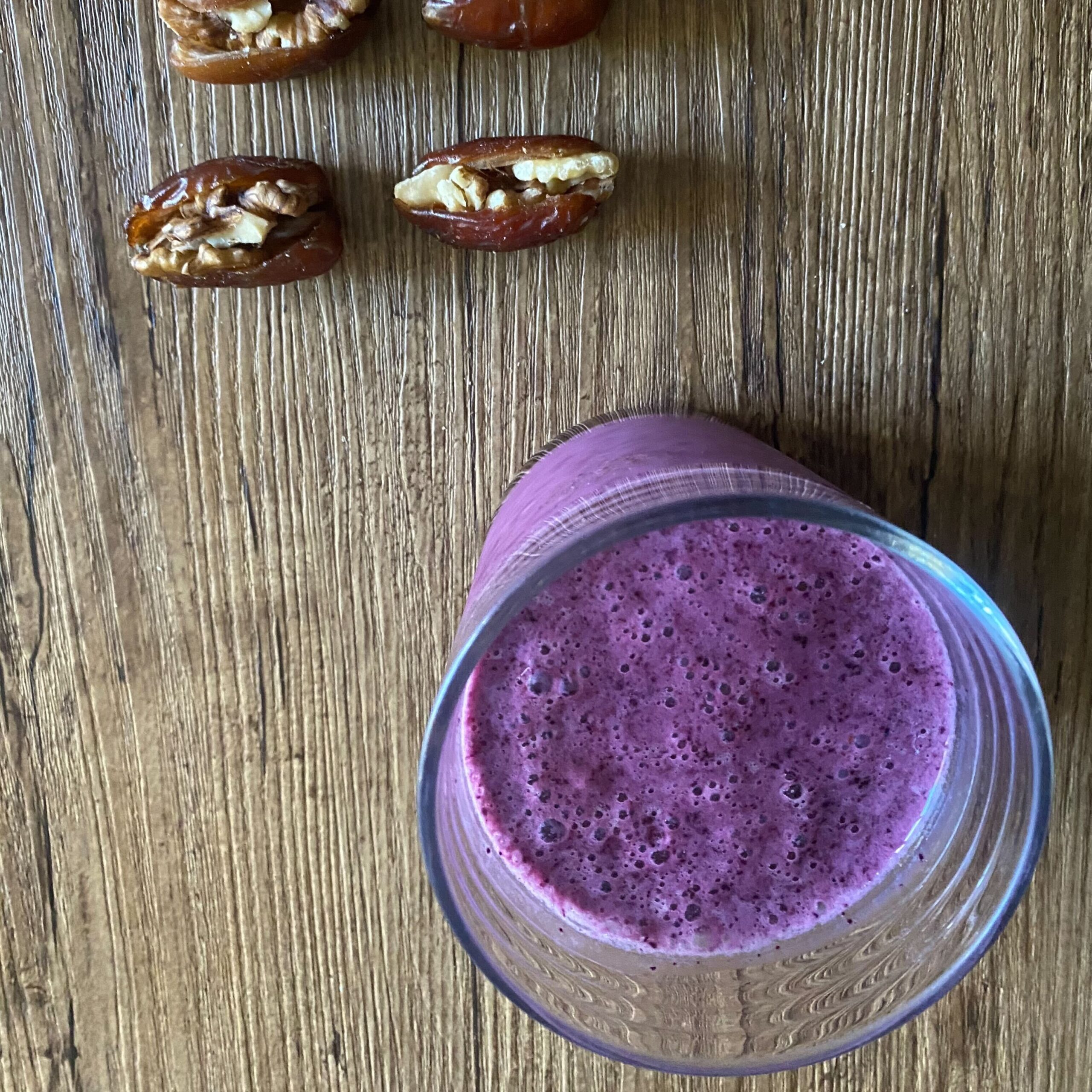
For a pre workout snack, I like to get a quick source of carbs + fats about 30 mins to an hour before for sustained energy throughout the workout. My choice is food is dates stuffed with walnuts and a kefir smoothie. I chose Kefir rather than milk or yogurt for my smoothie since it is a fermented drinks and consuming fermented products supports gut health
Snack 1 calories & Macros: 478 cals, 75 Carbs, 16 Fats, 13 P
Ingredient List: Medjool dates, walnuts, Kefir, blueberries, honey
Lunch (Meal 3)
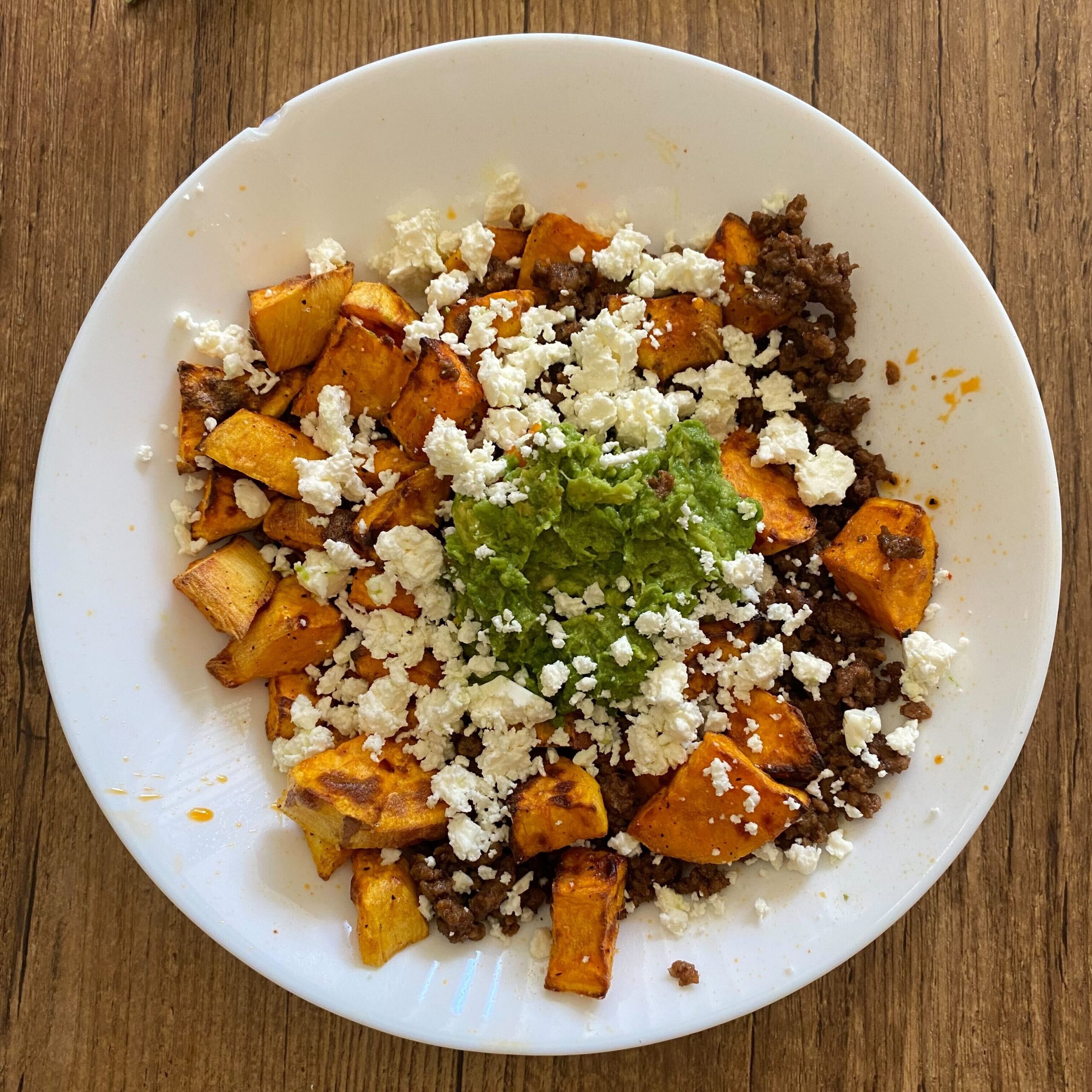
For lunch, I like to go basic, some ground beef, baked sweet potatoes. I like to top it off with some mashed avocado, a hard aged cheese like cheddar or parmesan or a soft cheese that’s nutritious like feta. The key to make this meal delicious lies in the seasoning. Add some salt, pepper but don’t just stop there. Garlic, onion some paprika.. you get the idea
My lunch is usually my biggest meal of the day and that’s because I normally have it after my training session. That also happens to be when I feel the hungriest during the day.
Lunch calories & macros: 594 calories, 37 Carbs, 32 Fats, 42 Protein
Ingredient List: Extra Lean Ground Beef, Sweet potatoes, feta cheese, avocado
Snack (Meal 4)
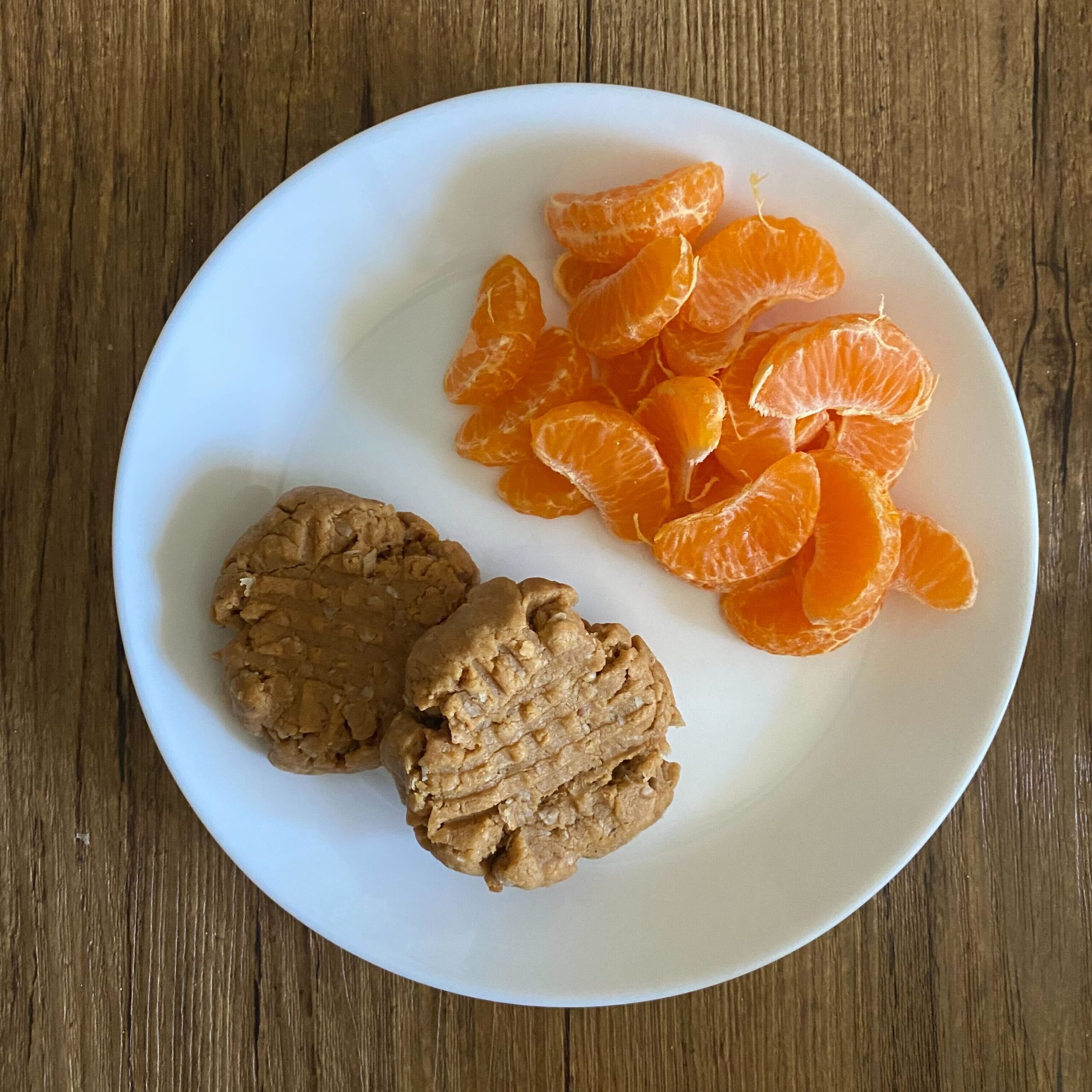
For an afternoon snack, I like to go for 1-2 pieces of fruit and a quick, convenient protein source.. If I’m on the go, I grab a protein bar with minimal ingredients like RxBar. But usually, I prepare some sort of protein treat/ dessert in advance, like my homemade peanut butter cookies with protein powder. I make sure to use high quality, whole food ingredients in my recipes such as oats, eggs, honey, and an all-natural nut butter, and a high quality protein powder.
Snack 2 calories: 430 calories, 53 Carbs, 21 F, 17 Protein
Ingredient List: clementines, peanut butter, eggs, oats, protein powder, honey
When it comes to protein powders, make sure to go for a third party tested, minimal ingredient protein whey powder. My choice of brand is PVL Iso Gold whey isolate. It meets all of the criteria above plus tastes amazing. It is also the purest form of protein where you get 27 grams of protein per scoop!!
Dinner (Meal 5)
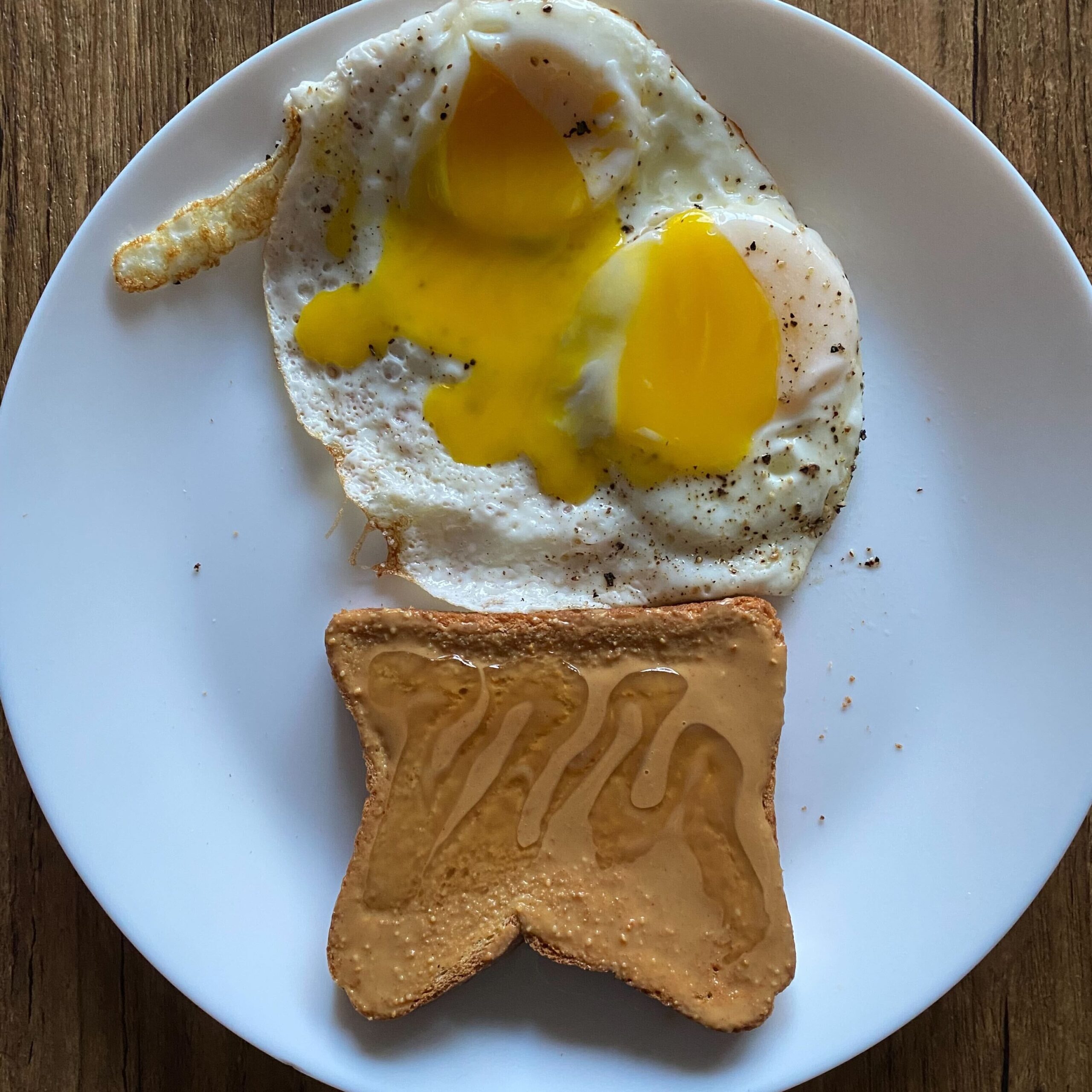
For dinner, I like to have a lighter meal since I already have 4 other meals prior. I like to vary my protein sources between Meats, dairy and eggs, sometimes some plant based sources as well. So dinner for me is usually sunny side up eggs paired with a peanut butter honey toast for some healthy fats and carbs. Not the highest in protein, but delicious and definitely satiating.
Dinner Calories & Macros: 333 calories, 27 Carbs, 18 Fats, 18 Protein
Ingredient List: Whole wheat bread, peanut butter, honey, eggs
To summarize, this blog is not me trying to tell you to eat exactly the meals that i have, but if you are a busy person who doesn’t have hours to spend in the kitchen making complicated meals, but still want to enjoy your food, sticking to single-ingredient, whole food, simple meals will transform your nutrition and health. Past me was surviving on popcorn and rice cakes thinking this was the epitome of health and fitness, but it was only after focusing on the quality of foods and not only the calories that I started feeling and performing my best.
Speaking of calories, here are the calories and macros for the end of the day for all these meals, just in case you were curious.
Total calories: 2125
Total Protein: 109
Total Carbs: 231
Total Fats: 97
For a calorie tracker, I recommend using MyFitnessPal for easy tracking. MyFitnessPal allows you to scan the barcodes of the foods that you eat or simply search the name of the food that you’re looking for. You could also share your food diary with your coach to have someone keep you accountable and guide you through your journey with nutrition
Another great option for a calorie tracker that not only focuses on calories but also the micronutrients is Cronometer. Cronometer gives you a breakdown of all your micronutrient intake so you can discover if you have any deficiencies in your intake
For measuring ingredients, I normally use a food scale and measure foods in grams. This is the most accurate way of measuring to know the exact calories in a certain amount of food. The next best alternative would be measuring in cups or spoons.
Ultimately what’s more important than specific numbers is the overall quality of your nutrition, your focus shouldn’t be on just numbers: calories, macros, weight, etc… but rather how often are you having whole, single ingredients foods that are minimally processed and high in nutrients. At least that’s the only way to ensure that you feel and perform your best!
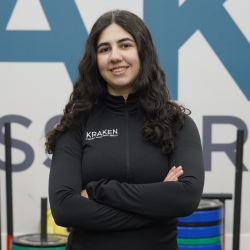
Written By: Karin Karjian
Growing up sedentary, I discovered the gym’s transformative power at seventeen, battling emotional eating and inconsistency. It became my mental escape, improving my body, stress levels, and confidence. Now, I aim to inspire others, guiding them in healthy eating and exercise, proving that fitness need not be overwhelming. Join me in finding joy in a balanced, healthier lifestyle.
